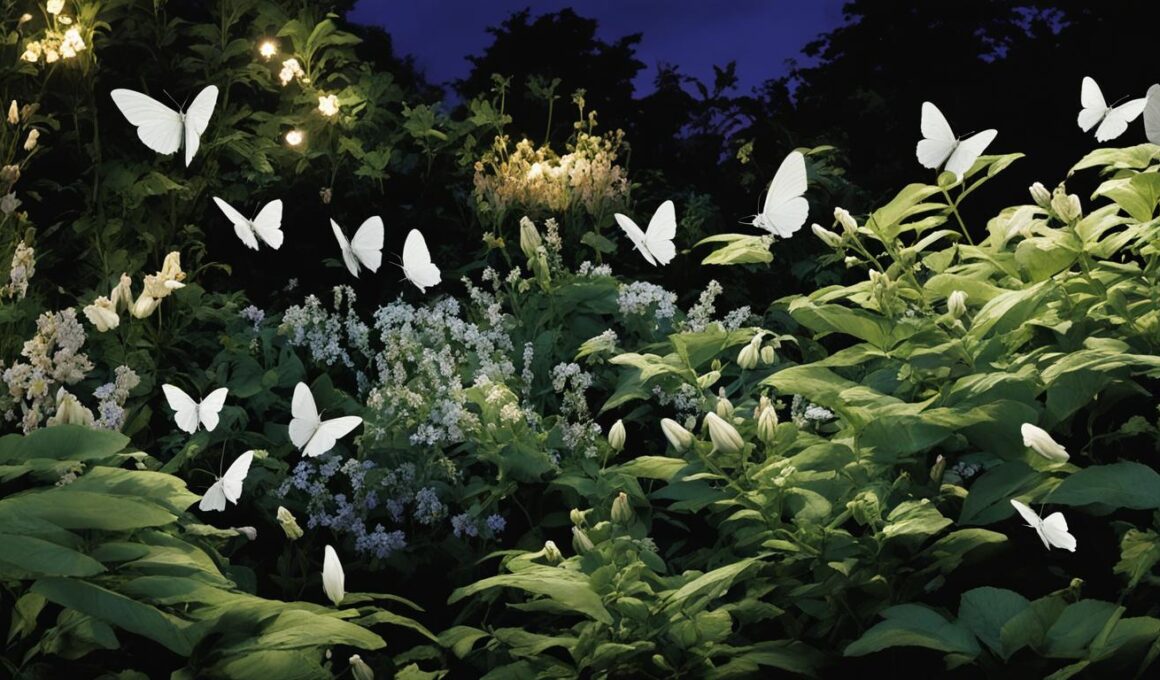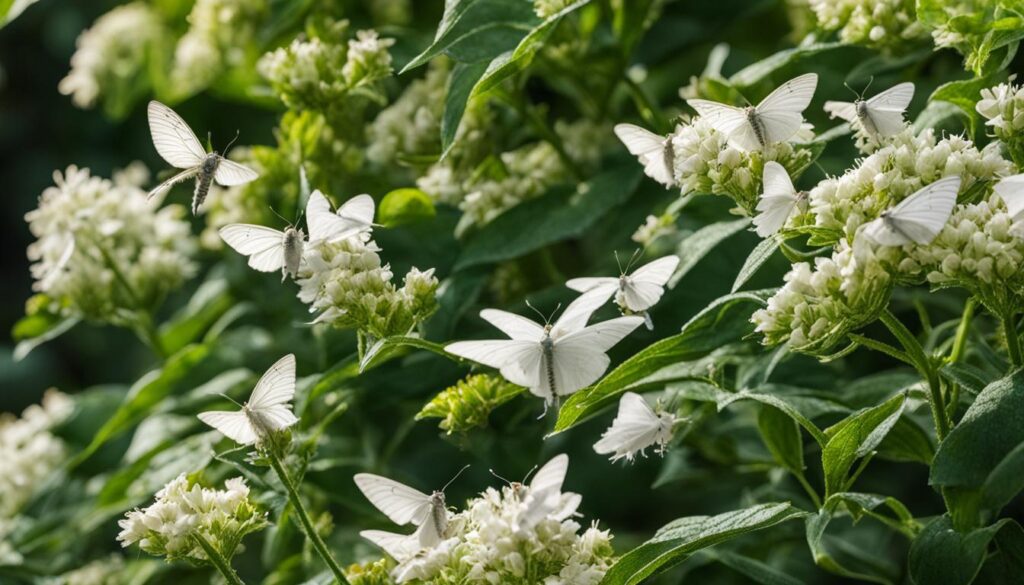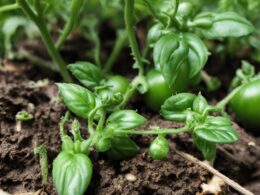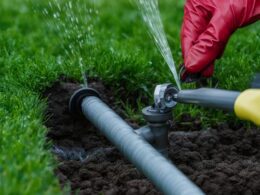The presence of white moths in your garden can have a significant impact on its overall health and productivity. The specific species of white moths determine whether they are beneficial pollinators or harmful pests to your plants. Understanding the role of these white moths is crucial for effective pest management and plant protection.
In this section, we will explore the different types of white moths commonly found in gardens and their potential impact on your garden’s ecosystem. By gaining a deeper understanding of these creatures, you will be better equipped to make informed decisions and create a thriving garden environment.
Garden Friends: Beneficial White Moths in Your Garden
Garden friends are vital for maintaining a healthy and thriving garden ecosystem. Among these beneficial allies are certain types of white moths that contribute to pollination and pest control. These garden-friendly white moths, such as yellow garden spiders, bees (including bumble bees, honey bees, and mason bees), ladybugs, praying mantises, clearwing hummingbird moths, and monarch butterflies, play a crucial role in the well-being of your garden.
Beneficial white moths are natural predators that help control harmful garden pests like caterpillars and aphids. They actively feed on these pests, reducing their populations and minimizing damage to your plants. Additionally, some white moth species, like clearwing hummingbird moths, aid in the pollination process by transferring pollen from flower to flower, facilitating plant reproduction and ensuring a bountiful harvest.
Understanding the importance of these beneficial white moths can assist you in creating a more balanced and sustainable garden environment. By attracting and supporting these garden friends, you can naturally enhance pest control and improve pollination, resulting in healthier plants and increased yields.
Garden Foes: Harmful White Moths in Your Garden
While some white moths are beneficial, there are also harmful white moth species that can cause significant damage to your garden plants. Two common examples of these harmful white moths are tomato hornworms and cabbage loopers.
Tomato hornworms are voracious caterpillars that can quickly defoliate and consume the fruits of your tomato plants. These pests have a green color with white stripes and can grow up to four inches in length. They blend well with the foliage, making them difficult to spot without close inspection. If left unchecked, tomato hornworms can devastate your tomato crop.
Cabbage loopers, on the other hand, pose a threat to plants in the brassica family, including cabbage, kale, and broccoli. These green caterpillars have a looping motion as they move, hence their name. Cabbage loopers feed on the leaves, causing unsightly holes and weakening the overall health of the plant. Identifying and managing these pests is crucial to protecting your brassica crops.
To prevent significant damage to your garden crops, it’s essential for you as a gardener to be able to identify these harmful white moths. Regularly inspect your plants for signs of pest activity, including chewed leaves, holes, and the presence of caterpillars. If you spot tomato hornworms or cabbage loopers, taking immediate action is vital to control their population and minimize pest damage.
Identifying Tomato Hornworms:
Tomato hornworm caterpillars are usually green with white stripes and have a horn-like appendage at their posterior end. They can be mistaken for tomato plants themselves due to their coloring and size. Regularly inspect the leaves and fruits of your tomato plants, especially if you notice chewed areas or dark green droppings on the foliage.
Identifying Cabbage Loopers:
Cabbage loopers are green caterpillars with a slightly lighter underside and visible legs. They have a distinctive looping movement that sets them apart from other caterpillars. Inspect the leaves of your brassica plants for small holes and ragged edges. Look for caterpillars under the foliage or on the stems.
By promptly identifying and managing these harmful white moths, you can protect your garden from pest damage. Stay vigilant and take appropriate steps to control their populations, such as manually removing caterpillars, using organic insecticides or employing natural pest control methods to preserve the health and productivity of your garden.
Conclusion: Managing White Moths in Your Garden
White moths in your garden can play both beneficial and harmful roles, depending on the species. Understanding the different types of white moths and their respective impacts is essential for effective pest management and plant protection. By implementing the right strategies, you can make sure your garden thrives while minimizing any potential damage caused by harmful white moths.
To manage white moths in your garden, it is important to encourage the presence of beneficial species. Planting flowers that attract these moths can help with pollination and pest control. Additionally, practicing proper identification and monitoring can help you intervene when necessary and prevent any potential damage to your plants.
If harmful white moths are causing significant harm, there are control methods you can employ. Physically removing white moth caterpillars or using organic sprays are effective options to minimize pest damage without harming beneficial insects or the environment.
By managing white moths in your garden with a balanced approach, you can create a healthy and thriving plant ecosystem. Remember to prioritize the protection of beneficial white moths while taking necessary measures to control harmful species. With proper management techniques, your garden can flourish and provide a beautiful, pest-free environment.
Are White Moths in the Garden Harmful to Hibiscus Plants?
White moths in the garden can lay eggs on hibiscus plants, leading to larvae that chew on the leaves and flowers. To prevent damage, use treatment for white hibiscus bugs. Neem oil or insecticidal soap can be effective in controlling these pests without harming beneficial insects in the garden.










